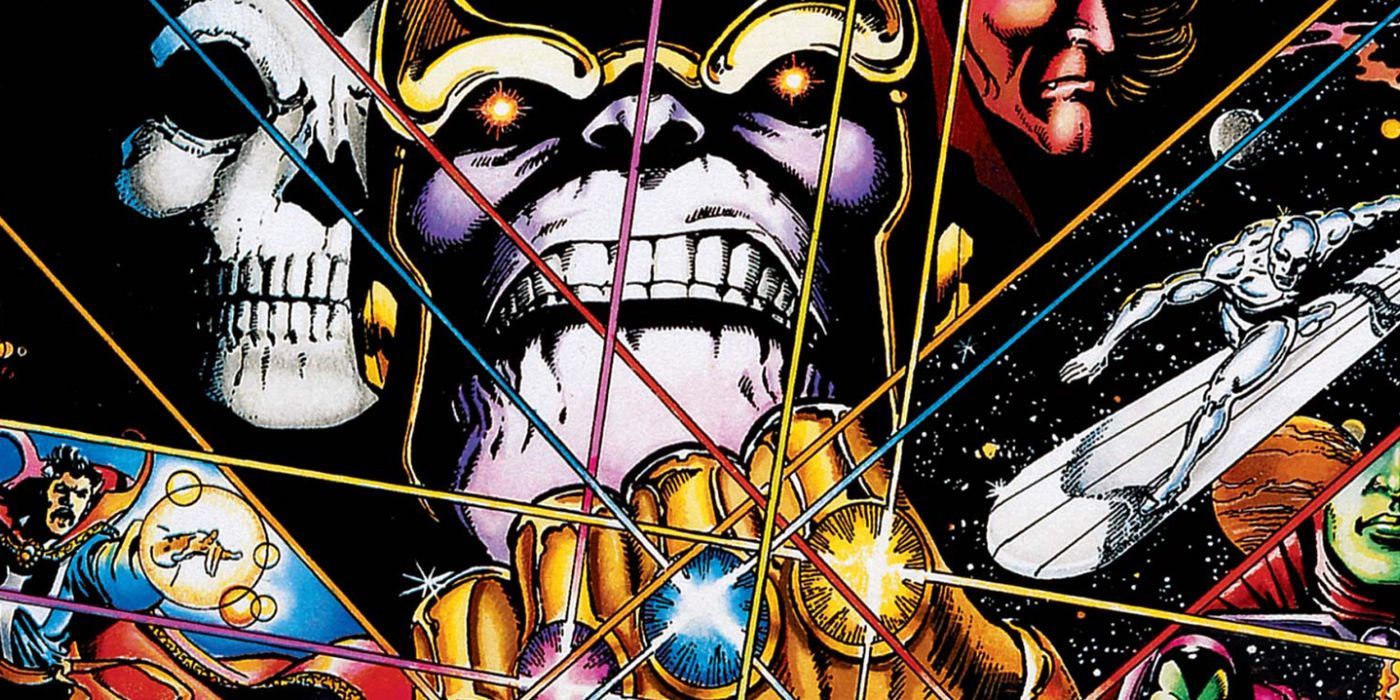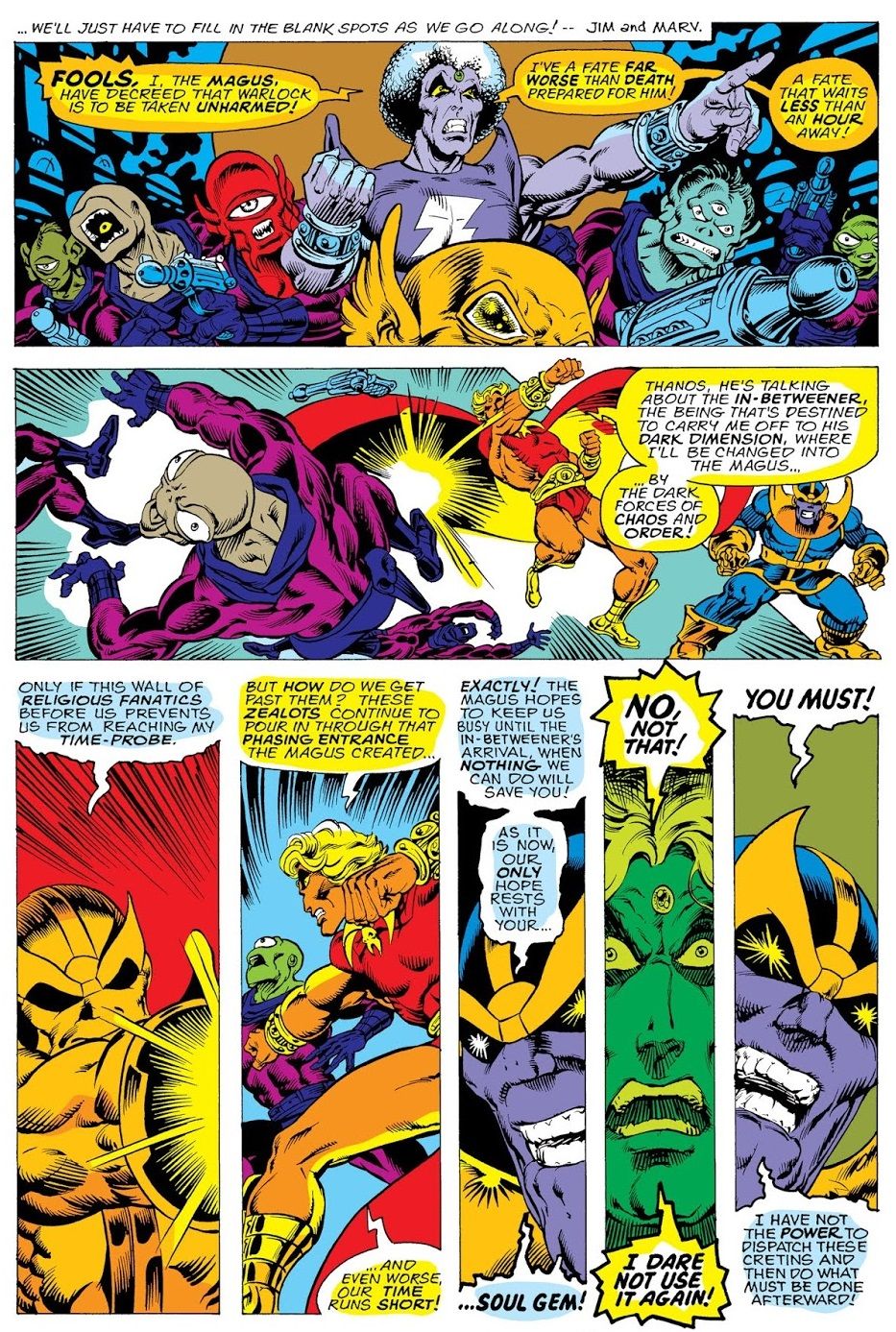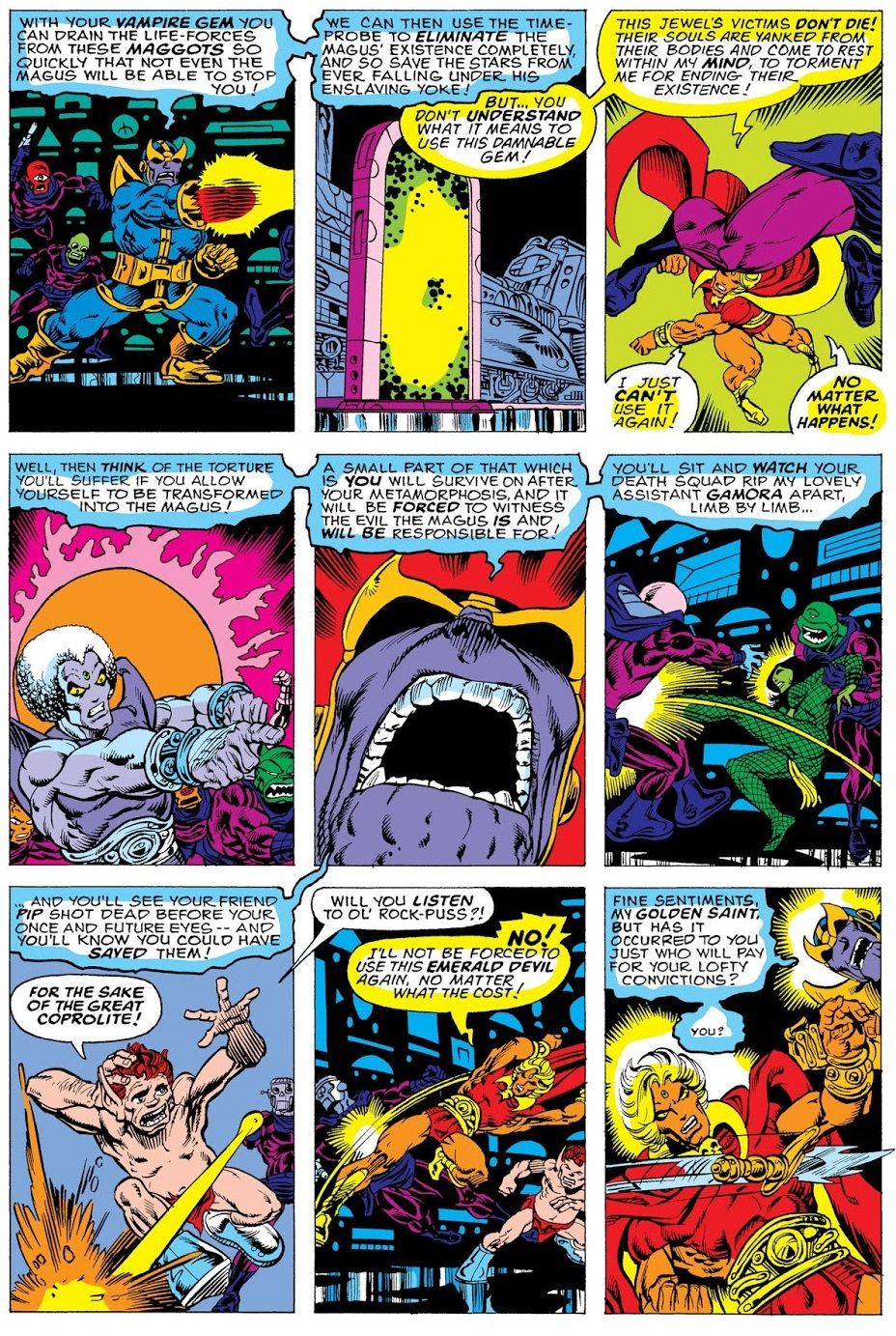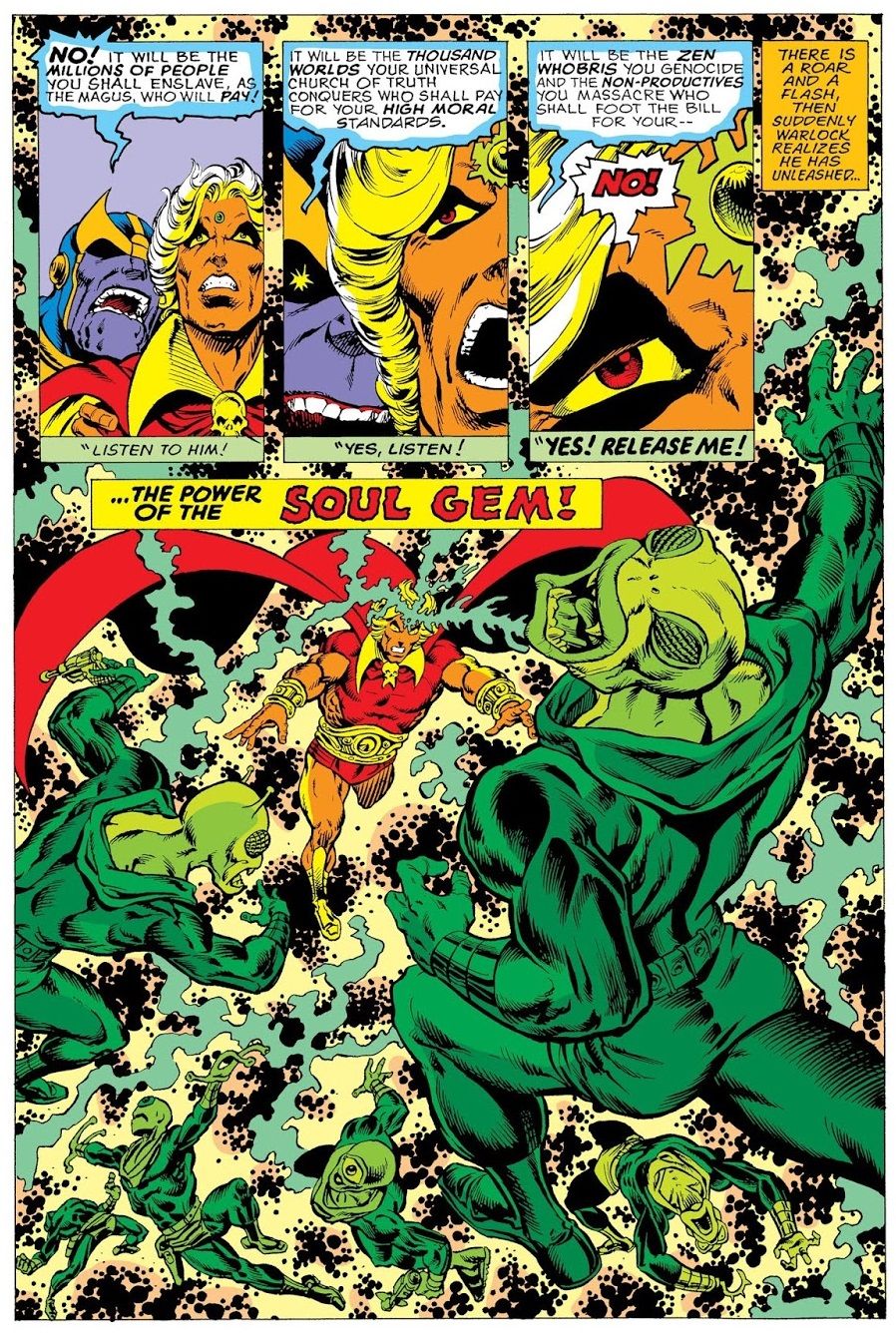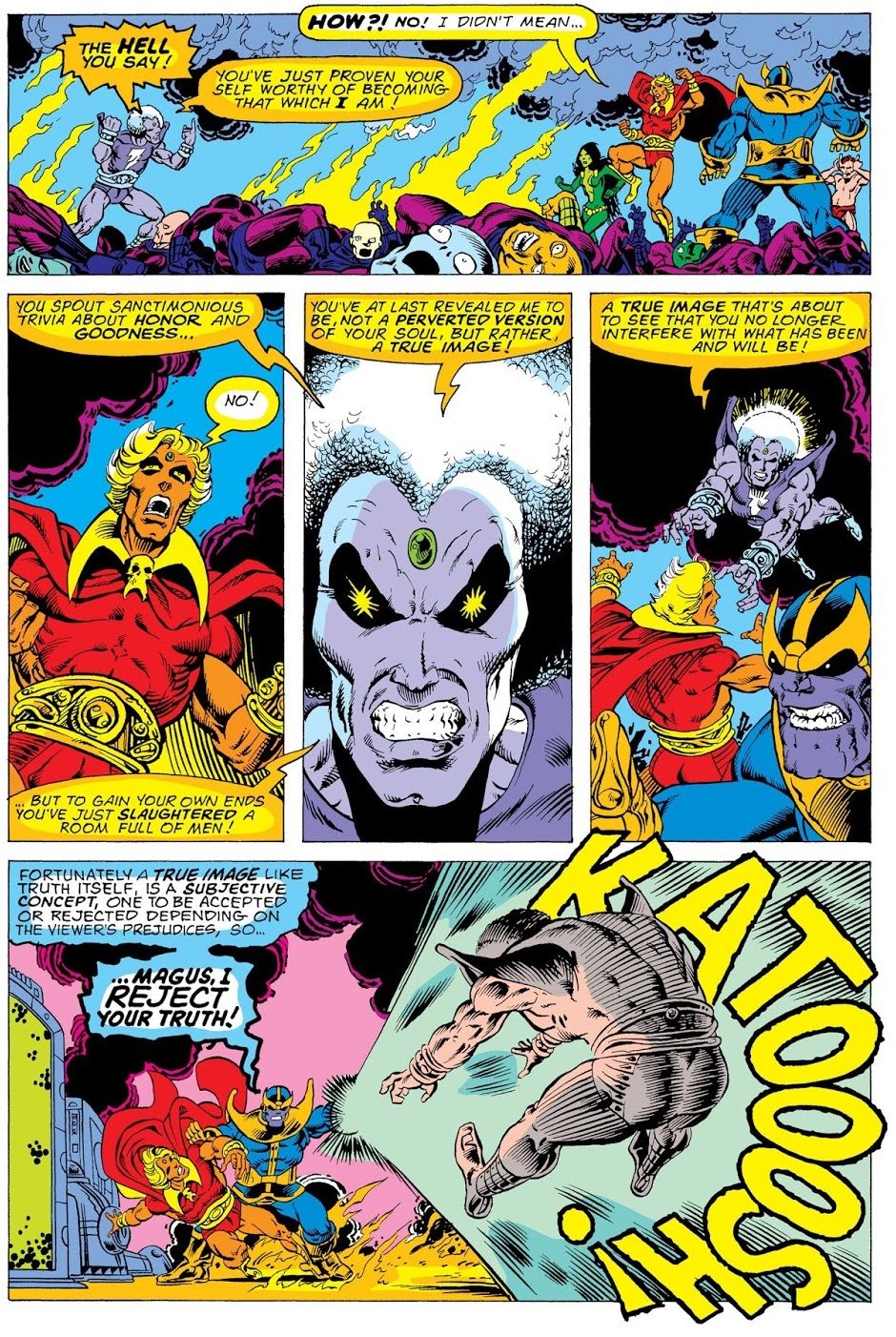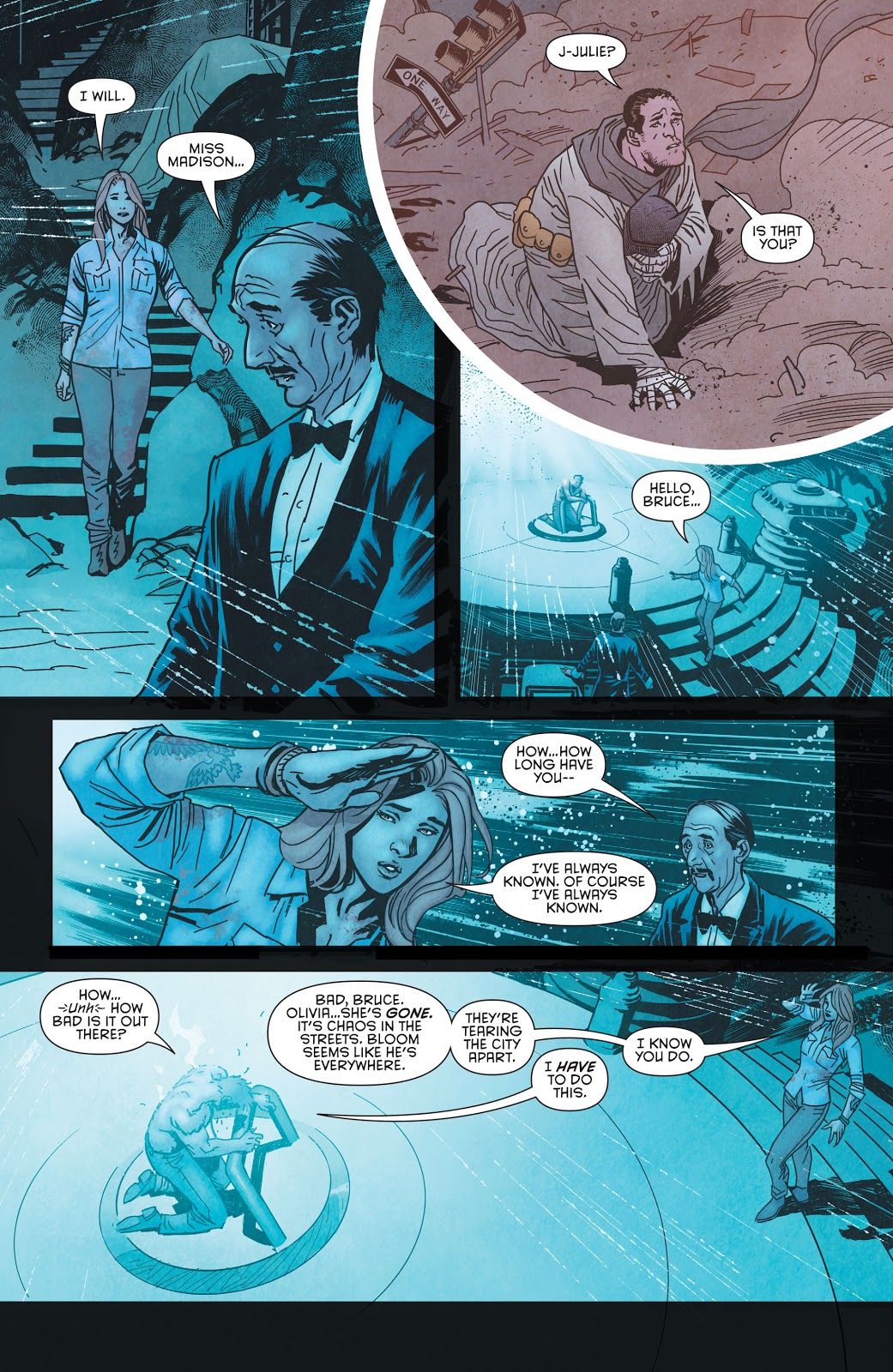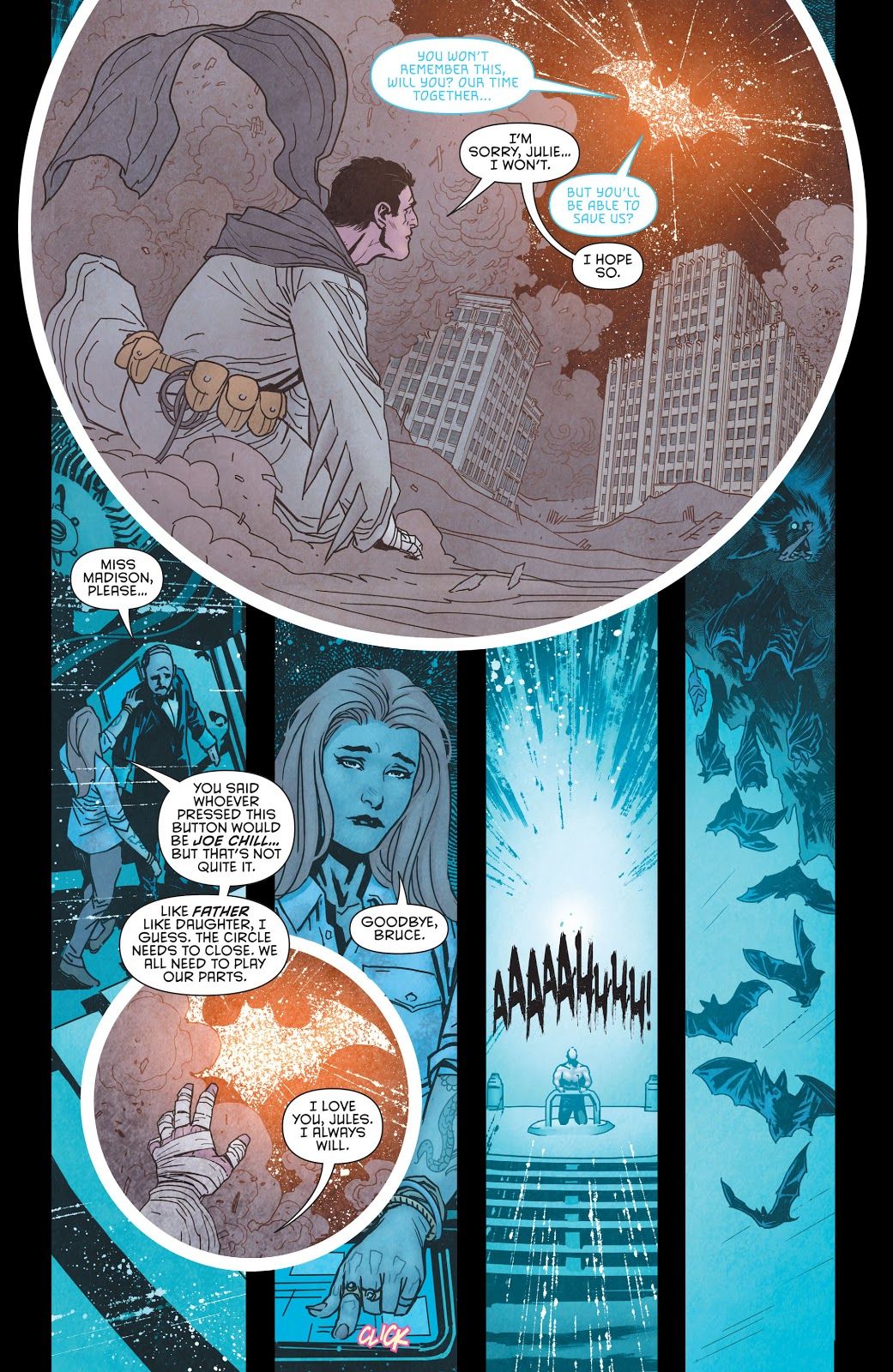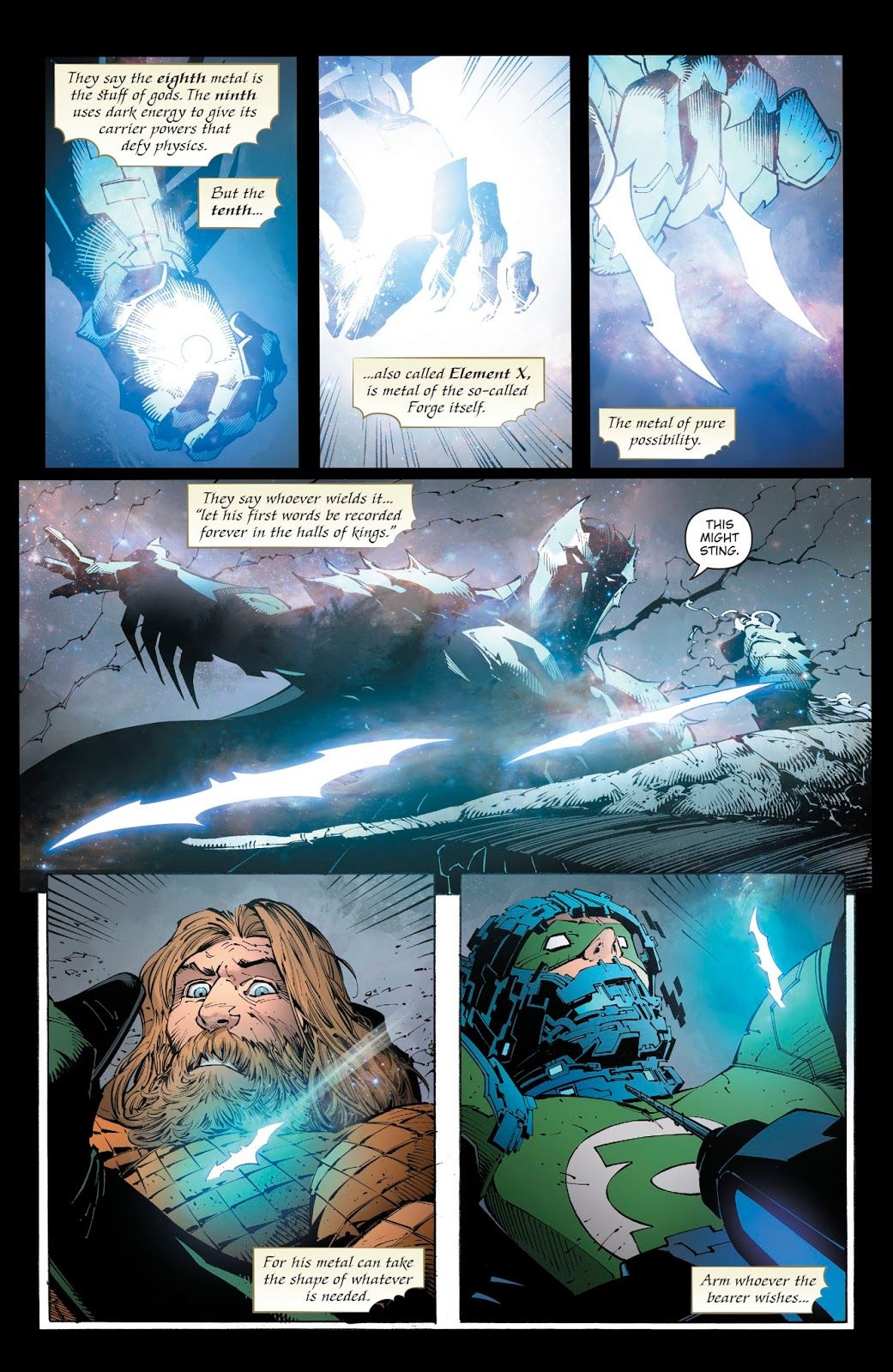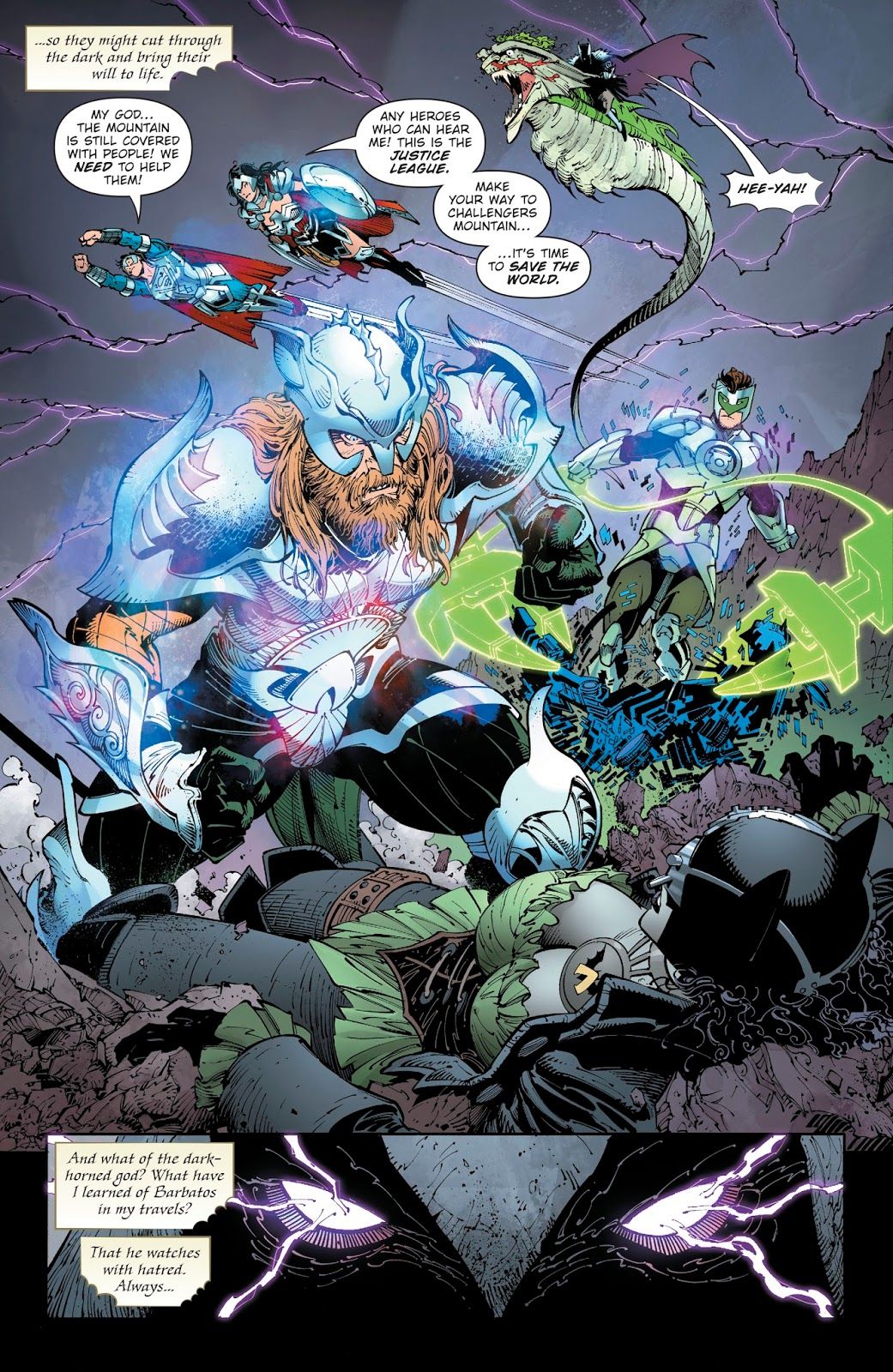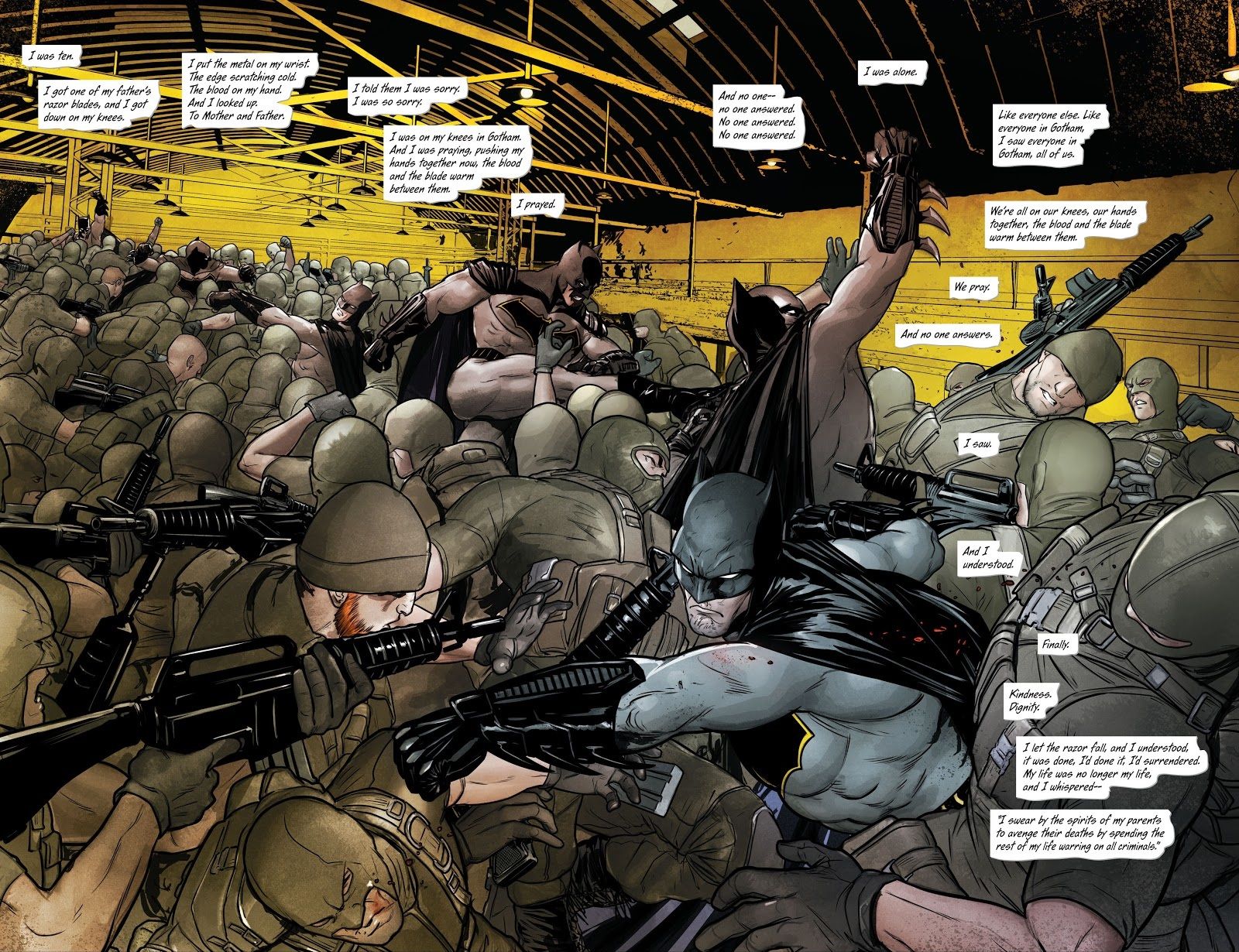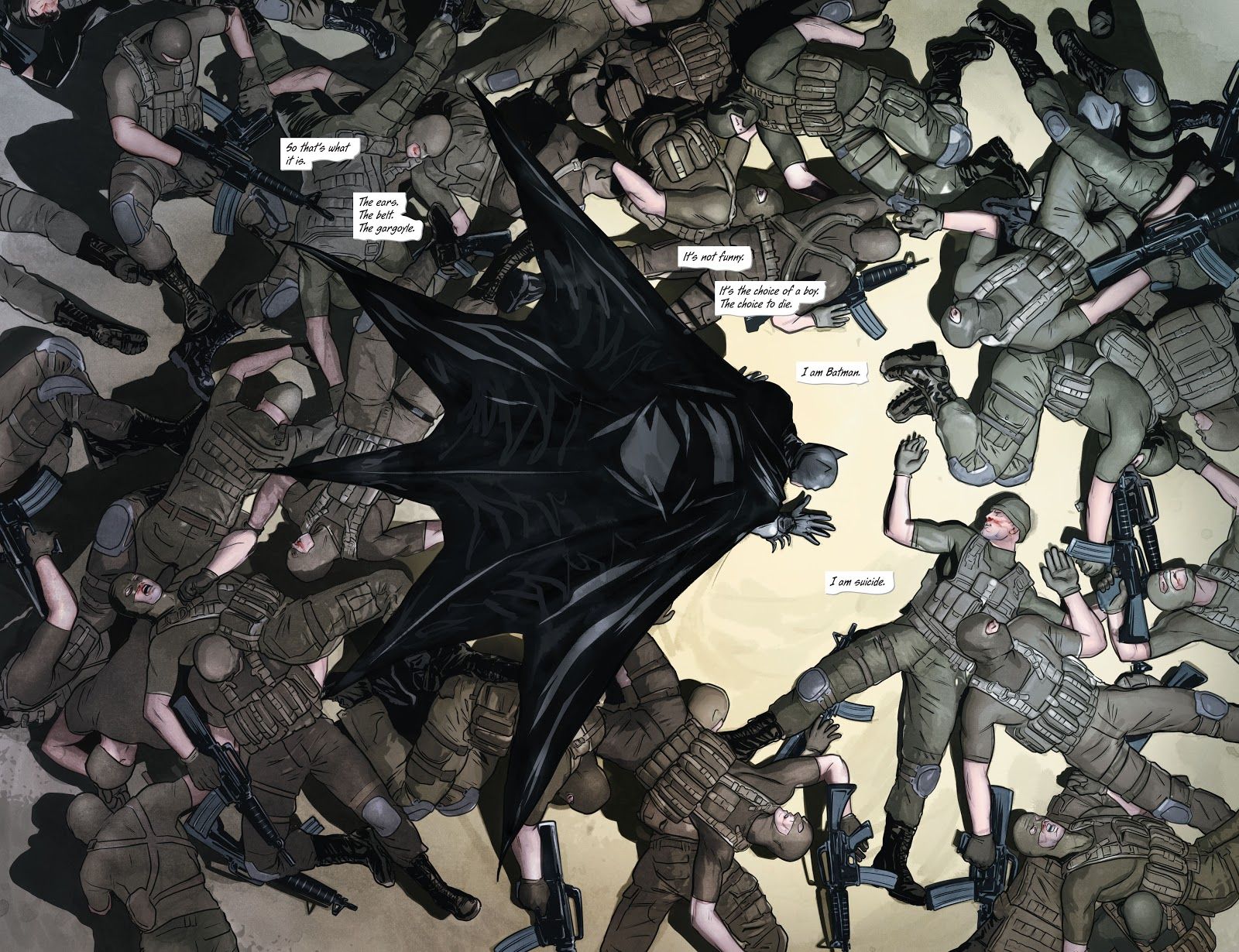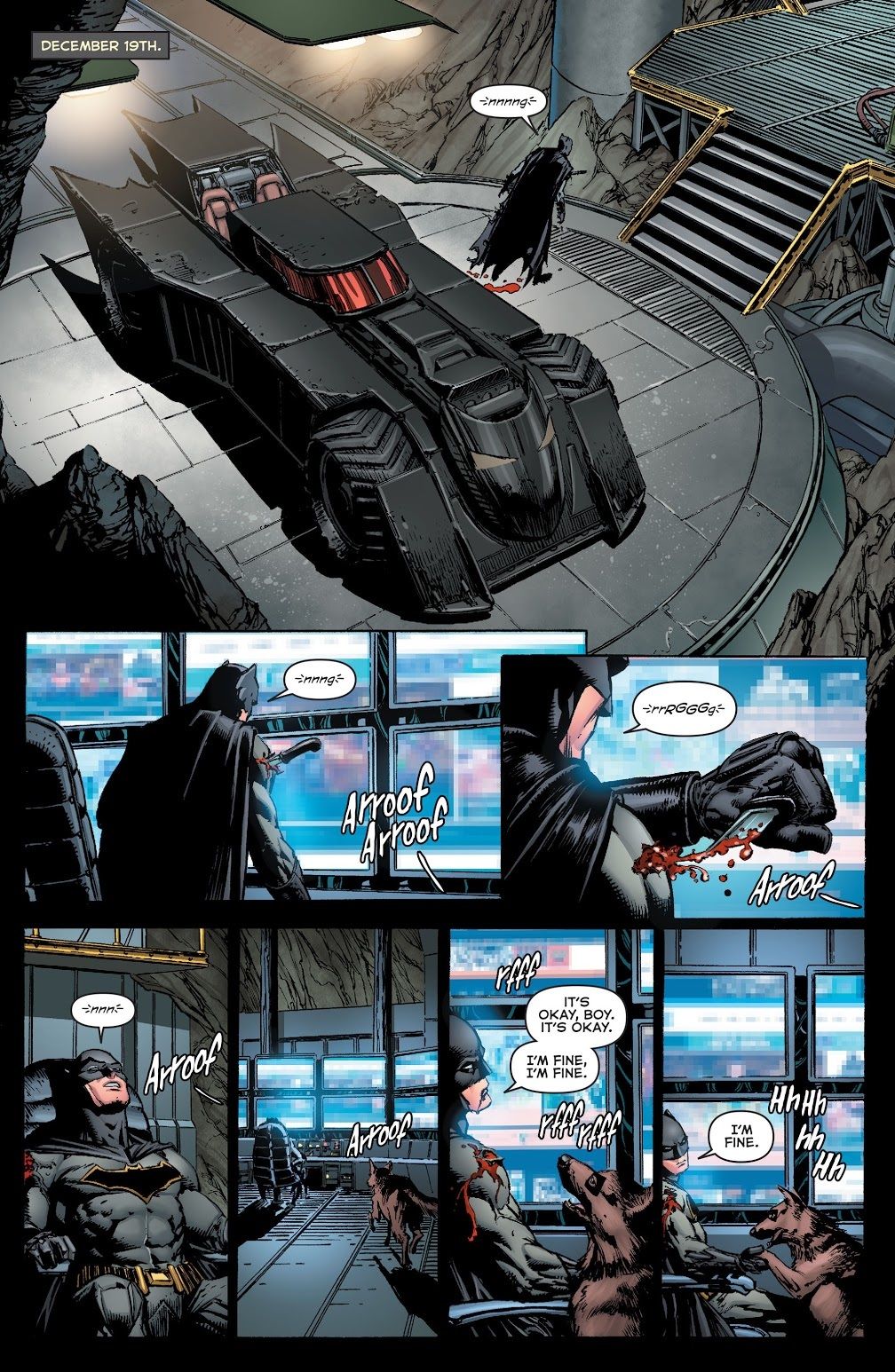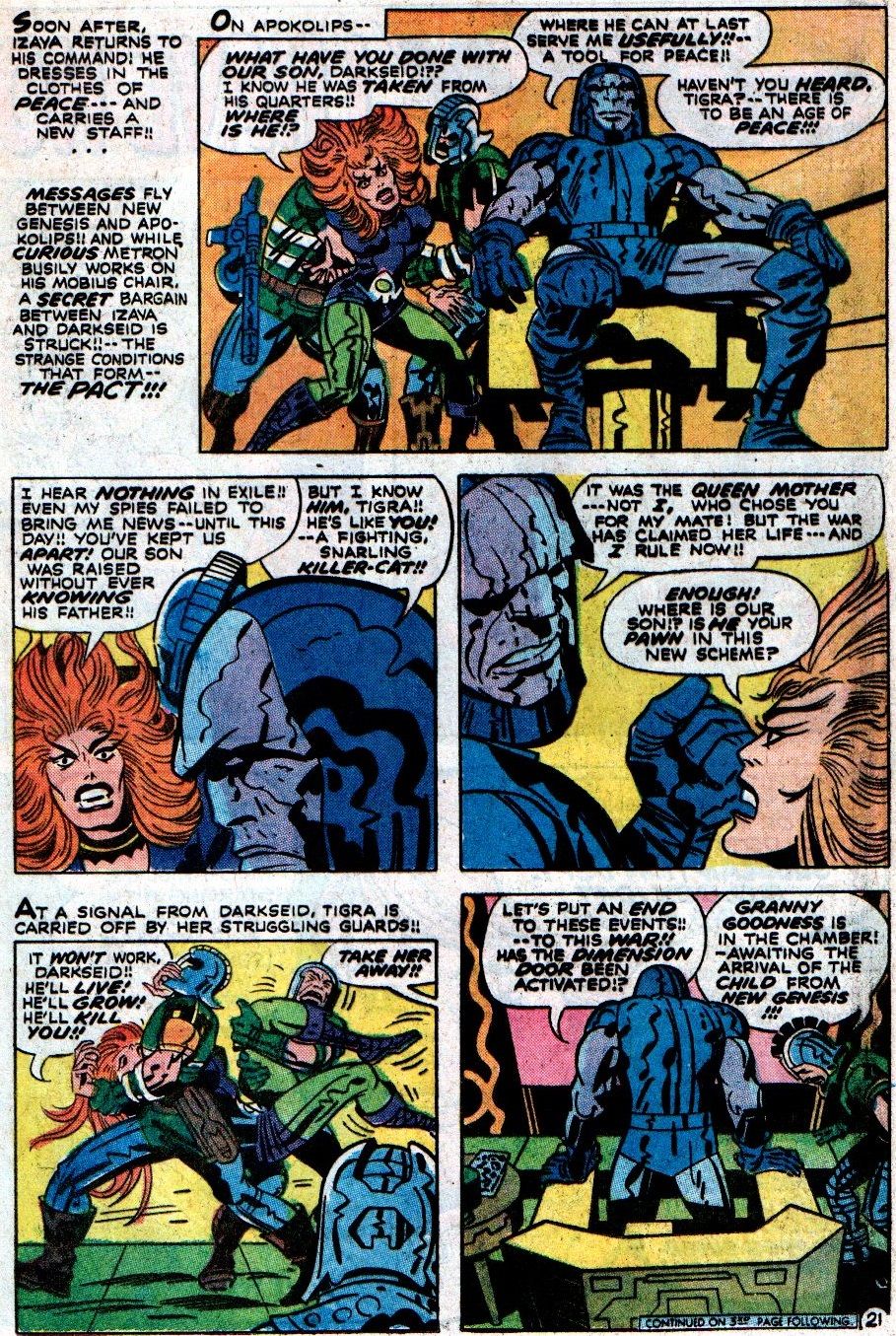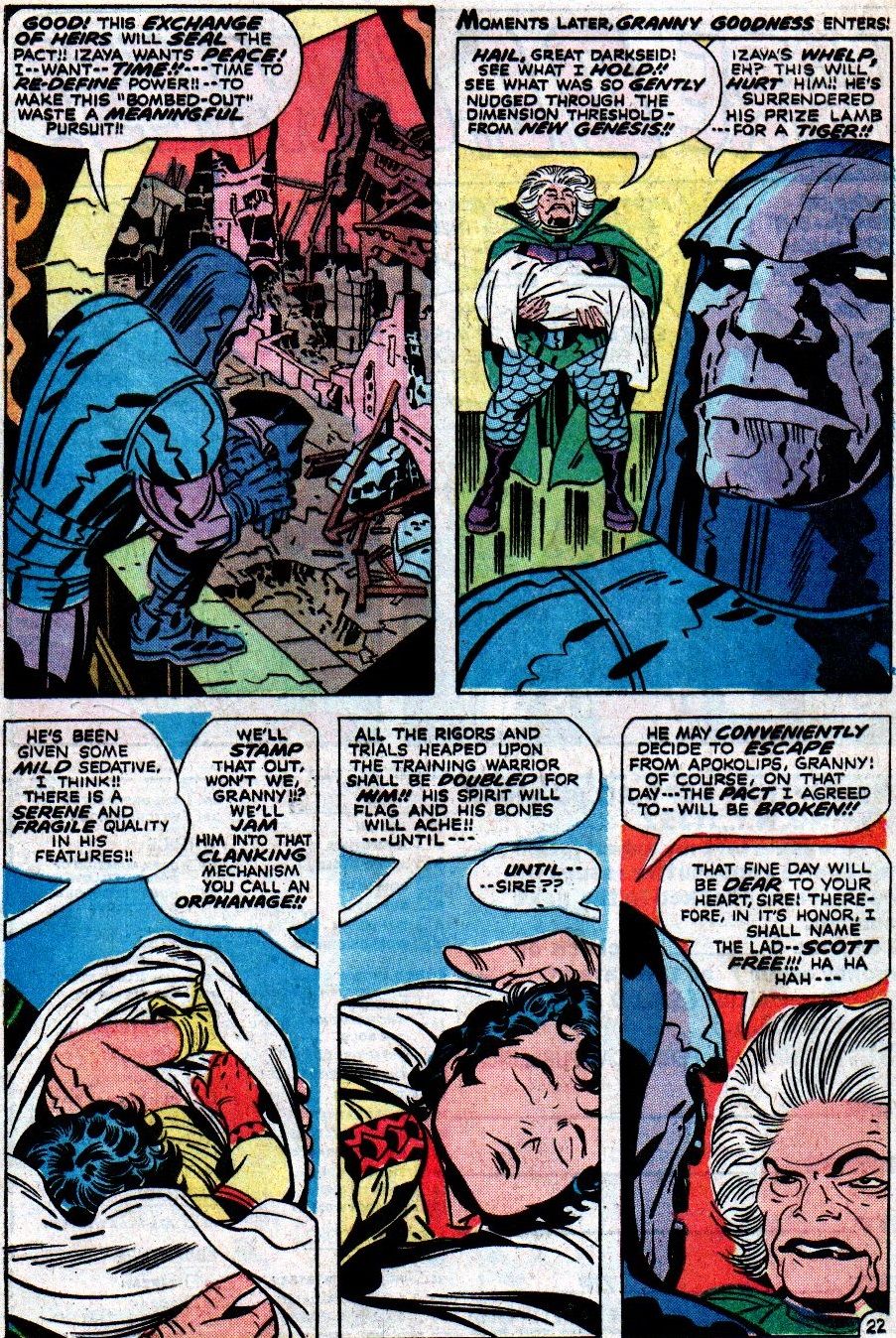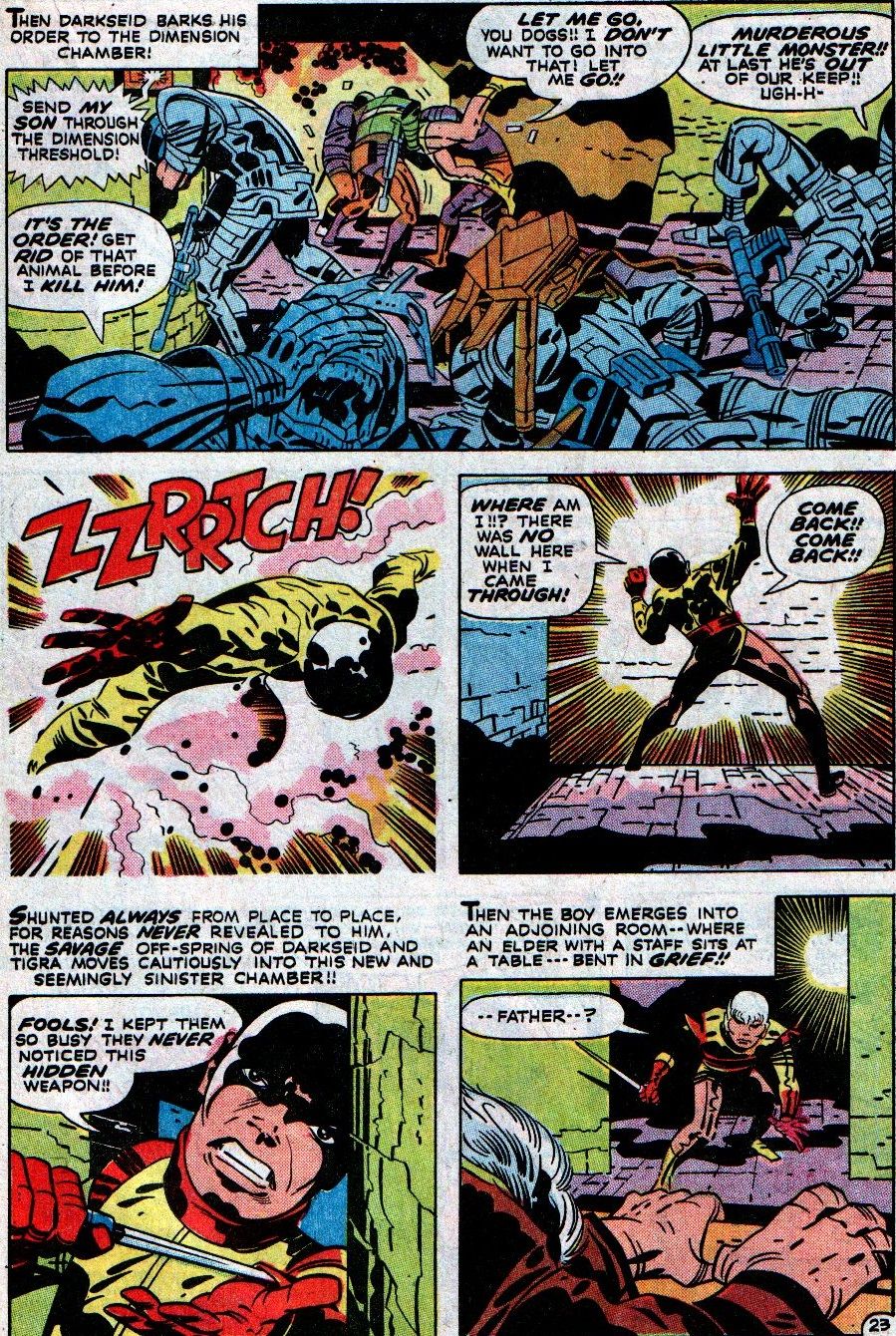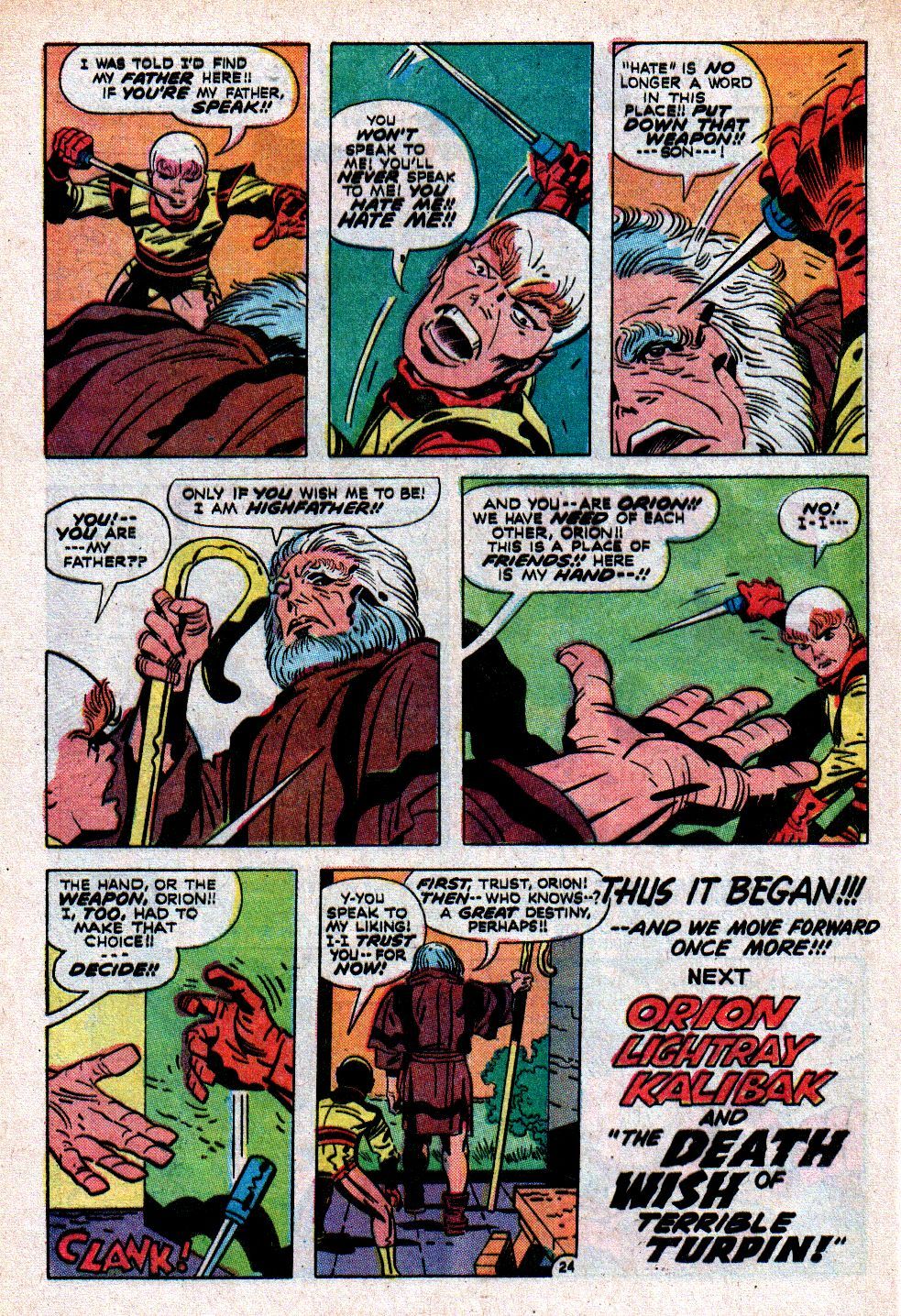The countdown continues! Here are the next four comic book writers that you voted as your favorites of all-time (out of roughly 1,023 ballots cast, with 10 points for first place votes, 9 points for second place votes, etc.).
26. Jim Starlin – 439 points (7 first place votes)
Jim Starlin had already established himself as a tremendous cosmic writer with his work on Captain Marvel, but his run on Warlock (spanning FOUR different titles) really cemented that reputation, with his back-to-back classic arcs, The Magus Saga and then whatever you call the story with Thanos.
Starlin had Adam Warlock face off against an evil religious empire, also Magus, his evil future self, not to mention Thanos, who is, as you know, an evil guy who loves him some death. Warlock and Thanos teamed up to fight Magus...
Starlin introduced some notable supporting characters, too, with Pip the Troll and Gamora, the "deadliest woman in the universe."
Starlin ultimately had to use other comics to finish his story, with the two Annuals, which ended with, well, everyone dying.
Starlin left superhero comics to do an extensive run on the science fiction epic Dreadstar. He then did a stint on Batman for DC where he came up with the KGBeast, the Cult mini-series and wrote the story where Jason Todd was killed.
Starlin would later revive all his Warlock characters for new stories at Marvel, including the classic crossover storyline, The Infinity Gauntlet, which would lead to a number of other crossovers over the years. He returned to his Thanos creation on a series of stories in more recent years, including a few graphic novels (mostly working with artist Alan Davis). Most recently, he has returned to Dreadstar for a new graphic novel in 2021.
25. Scott Snyder – 451 points (3 first place votes)
Scott Snyder is currently working on a number of popular creator-owned series, including Dark Spaces: Wildfire #1–5 for IDW, Night of the Ghoul for Dark Horse and more on the way.
This came after a string of writing major series for DC, including Justice League and, before that, Batman, where he deftly mixed between an action-packed series of stories (to best utilize his partner on the book, Greg Capullo) and an examination of the history of Gotham City and an exploration of the idea of Gotham City as almost its own separate character. It was a blast.
Since I featured a series of Capullo Batman pages in Greg Capullo's entry, I'll take a look towards the end of Snyder's run, with a heartwrenching story where Bruce Wayne has finally moved past being Batman and has found love with Julie Madison, but Gotham needs him again, even if it means him losing all of those memories....
Snyder and Capullo also famously did two major superhero crossoversm with Dark Nights Metal and Dark Nights Death Metal, two of the more impactful crossovers in recent memory.
The first one has Batman riding a freaking Joker dragon, people!
However, Scott Snyder is a heck of a lot more than just one cool superhero writer. His work for Vertigo and Image has been especially terrific (this isn't even getting into his strong run on Swamp Thing out of the New 52!). For Vertigo, he created American Vampire, a careful study of the 20th century through the eyes of vampires (with two of the best constructed lead characters in comics with Skinner Sweet and Pearl Jones) and The Wake.
Over at Image, he did the delightfully disturbing series Wytches, which take the idea of "be careful what you wish for" to an absurd degree.
Perhaps most impressive of all, though, is how much good Snyder has done as a mentor to other writers and as a teacher of writing. He would have had a major positive impact on comics as a whole over the past decade even if he never wrote a single page.
24. Tom King – 457 (8 first place votes)
After getting his start writing Grayson with Tim Seeley, which traded heavily on King's past work with the Central Intelligence Agency, King drew plaudits for his work on Omega Men and The Sheriff of Babylon.
King then captured the attention of the whole comic book industry with his stint on The Vision with Gabriel Walta and Jordie Bellaire. That series saw the Vision create his own suburban family and we got to explore what it really meant to be alive and the extreme lengths people will go to to protect their family.
King then relaunched the ongoing Batman series as part of DC Rebirth. King spent a lot of time discussing trauma, a topic that rarely gets brought up in comics despite the great deal of violence that takes place in comics. King's Batman is someone who is still dealing with a great deal of trauma, but he is willing to try to get better. In an early arc, King revealed that a young Bruce Wayne was so traumatized by his parents' murders that he almost took his own life...
As I noted, though, this isn't just about trauma, but also about ways to deal with trauma. This often is expressed in some rather heartwarming ways, like King's Eisner Award winning look at the new origin for Ace the Bat-Hound, as Alfred takes an abused attack dog and slowly gets him to a good place, all while Batman doesn't even really realize what Alfred is doing and how much it relates to Bruce's own life...
King's Batman run recently concluded with a special Batman/Catwoman run with artist Clay Mann. King has also received a great deal of acclaim for his series of miniseries for DC, including Mister Miracle (with Mitch Gerads), Rorschach (with Jorge Furnes), Strange Adventures (also with Gerads) and the current series, Human Target (with Greg Smallwood) and Gotham City: Year One (with Phil Hester).
23. Jack Kirby – 506 points (5 first place votes)
Jack Kirby had been creating popular comic books for nearly TWO DECADES before he co-created most of the Marvel Universe with Stan Lee. Kirby worked with Joe Simon for years, and the way that they worked then would become quite familiar to Kirby (and the rest of the comic book world) years later at Marvel. You see, Kirby and Simon would produce a great deal of pages (they were almost single-handedly putting together whole lines of comics) and Kirby would end up plotting most of the books and then would also draw most of them. Simon would then script most of the books, as Kirby was faster than Simon (Simon would still draw his own comics, as well, of course, but even there, he often co-plotted those books with Kirby, too).
When Kirby got to Marvel, Lee gladly used the "Marvel Method," where Lee would only plot a story, have the artist draw it and then Lee would add dialogue to the penciled work. Kirby, however, was such a talented storyteller himself that as time went by, Lee gave Kirby more and more freedom in the plotting of their comics together. On the Fantastic Four, Kirby was plotting by himself for the last couple of years on the title (likely the same for his Thor work).
For a variety of reasons, Kirby left Marvel for DC in the early 1970s, where he created a whole pile of new characters, most famously the Fourth World characters, where the good heroes of New Genesis battle the evil villains of Apokolips. In the classic New Gods #7, we see how the two worlds came to a truce years ago (and how Darkseid always planned for it to break).
Kirby returned to Marvel in the late 1970s to write and draw comics for them, including Captain America, Black Panther, Devil Dinosaur and the Eternals. After doing some independent comic creations plus some more work for DC Comics, Kirby mostly retired by the end of the 1980s.

